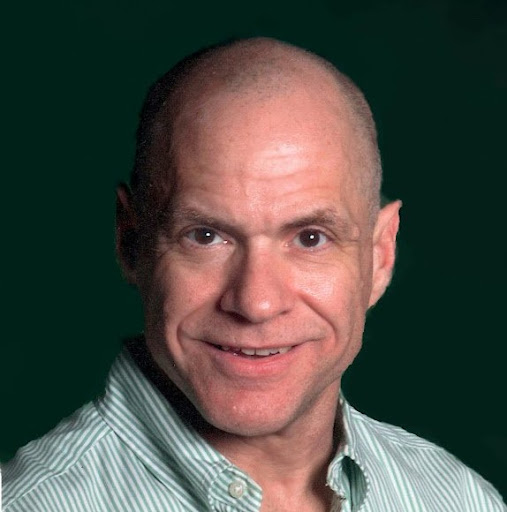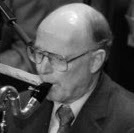Richard W Mathias
age ~88
from Shelton, WA
- Also known as:
-
- Richard Walter Mathias
- Rick W Mathias
- Rw Mathias
- Dick W Mathias
Richard Mathias Phones & Addresses
- Shelton, WA
- Kent, WA
- 10915 17Th St, Bellevue, WA 98004 • 4254500151 • 4254544661
- Federal Way, WA
Specialities
Buyer's Agent • Listing Agent
Us Patents
-
Adaptive Control System For Numerically Controlled Machine Tools
view source -
US Patent:40781950, Mar 7, 1978
-
Filed:Jan 13, 1976
-
Appl. No.:5/648640
-
Inventors:Richard A. Mathias - Renton WA
Lyle C. Adams - Maple Valley WA
Edward N. Miller - Seattle WA -
Assignee:Macotech Corporation - Seattle WA
-
International Classification:G05B 1300
-
US Classification:318561
-
Abstract:Prior art adaptive control systems for numerically-controlled milling machines are first discussed in which N/C instructions and adaptive control system data are obtained and stored in a storage medium utilizing a software routine which takes into consideration parameters of the milling process and parameters of a specific milling machine. The instructions and data command, for sequential steps in the milling process, such items as spindle position, feedrate and reference milling forces and are supplied to an N/C unit and to the adaptive control system at the milling machine to automatically control the milling process. The adaptive control system includes a milling force sensor and functions to override the commanded feedrate on comparison of the actual milling forces during the process with the reference milling forces. An improvement is then discussed which modifies the adaptive control system data so that the data can be used on any milling machine having an N/C unit capable of responding to the N/C storage medium in which the N/C instructions and adaptive control system data are stored. A set of universal adaptive control variables are included in the adaptive control data.
-
Load Measurement Apparatus Including Miniature Instrumented Hydrostatic Cell
view source -
US Patent:45639060, Jan 14, 1986
-
Filed:Nov 23, 1983
-
Appl. No.:6/554600
-
Inventors:Richard A. Mathias - Renton WA
-
Assignee:Camtech, Inc. - Renton WA
-
International Classification:G01L 102
-
US Classification:7386258
-
Abstract:The load measurement apparatus includes a pressure arm 60 rigidly coupled to a structural member whose load is to be measured, and a miniature instrumented hydrostatic cell rigidly mounted in proximity to the pressure arm so that a membrane of the cell engages the pressure arm and displaces as the pressure arm displaces. In one embodiment, the cell includes a housing consisting of a first cylindrical portion 20 and a second cylindrical portion 22 integral with and centrally projecting from the first cylindrical portion. A cylindrical cavity 24 is formed within the housing portions and coaxial therewith. At one end, the cavity is closed by a thin membrane 26, and at its other end, the cavity communicates with a threaded bore that receives and is closed by female portion 34 and male portion 36 of a seal. A temperature compensation insert 30 is disposed within the cavity, and the portions of the cavity not occupied by the insert are completely filled with an incompressible fluid that is introduced through the seal. The pressure within the cavity is measured by a pressure transducer 50.
-
Force And Torque Sensor For Machine Tools
view source -
US Patent:44440618, Apr 24, 1984
-
Filed:Mar 26, 1982
-
Appl. No.:6/362451
-
Inventors:Richard A. Mathias - Renton WA
-
Assignee:Camtech Inc. - Renton WA
-
International Classification:G01L 516
-
US Classification:7386206
-
Abstract:The sensor includes at least one pressure chamber that is filled with an incompressible fluid, a membrane that forms at least one wall of the pressure chamber, a pressure transducer measuring the pressure within the pressure chamber, and a pressure arm whose first end is secured to a machine tool member at a location at which force and torque are to be measured and whose second end bears on the membrane. By appropriately choosing the number and disposition of pressure chambers, membranes, and pressure arms, output signals from the corresponding pressure transducers are related to selected components of transverse force torque, and axial force of the machine tool member. Various embodiments of the sensor for use with machine tools having a rotating tool and machine tools having a stationary tool are disclosed, and techniques are described in which these embodiments can be used to determine the angle between transverse force exerted on the machine tool member and a stationary axis of the machine tool, to determine the plane of transverse loading of the transverse force, and to compensate the pressure measurements in accordance with the determined plane of transverse loading.
Resumes

Telecom & It Project Manager At Marysville School District
view sourceLocation:
Greater Seattle Area
Industry:
Computer Networking

Richard Mathias
view source
Chemical Engineer
view sourceWork:
Shell Oil & Gas Energy Industry
Chemical Engineer
Chemical Engineer
Education:
University of Tromsø School of Aviation

Richard Mathias
view source
Service Writer
view sourceWork:
J-J Sales Service
Service Writer
Service Writer
Education:
Owens Community College

Richard Mathias
view source
Richard Mathias
view source
Richard Mathias
view sourceName / Title
Company / Classification
Phones & Addresses
President
System Electric Inc
Electrical Contractor
Electrical Contractor
10915 NE 17 St, Bellevue, WA 98004
4254544661
4254544661
LANIER-MATHIAS INVESTMENT PROPERTIES, LLC
Lawyers & Attorneys

Richard Mathias - Lawyer
view sourceOffice:
DWF LLP
ISLN:
920390649
Law School:
Sheffield University, LL.B., 1992

Richard Mathias - Lawyer
view sourceISLN:
905099253
Admitted:
1965
University:
Denison University, B.A., 1961
Law School:
University of Michigan, J.D., 1964

Richard Mathias
view source
Richard Mathias Kenedy
view source
Richard M Mathias
view source
Richard Tadeu Mathias
view source
Richard Lee Mathias
view source
Richard Mathias
view source
Richard Mathias
view source
Richard George Mathias
view sourceMyspace
Googleplus

Richard Mathias

Richard Mathias

Richard Mathias

Richard Mathias

Richard Mathias

Richard Mathias

Richard Mathias

Richard Mathias
Flickr
Youtube
Classmates

Richard Mathias
view sourceSchools:
Thurmont High School Thurmont MD 1961-1965
Community:
Carlotta Smith, Anne Burrier, Susan Stambaugh

Richard Mathias
view sourceSchools:
Indiana Elementary School South Haven MI 1968-1972, East Essex Elementary School St. Johns MI 1973-1974, Eureka Elementary School Eureka MI 1975-1976, Rodney B. Wilson Middle School St. Johns MI 1976-1978
Community:
Robert Stevenson

Richard Mathias
view sourceSchools:
South Bloomingville Elementary School South Bloomingville OH 1955-1959
Community:
Marty Stalnaker, Craig Fetherolf, Bethany Zickefoose, John Schultz, Gerald Waybright

Richard Mathias, Victoria...
view sourceNews

Comets May Reveal Cosmic Origin of Life on Earth
view source- "It's fascinating to consider that the most basic biochemical building blocks that led to life on Earth may well have had an extraterrestrial original," said Richard Mathias, co-author of the paper, in a press release.
- Date: Mar 05, 2013
- Source: Google
Get Report for Richard W Mathias from Shelton, WA, age ~88














